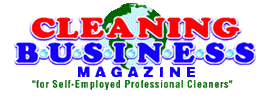Floor Care Basics
Successful floor care is based on a comprehensive program that includes prevention and ongoing maintenance procedures performed on a frequency that meets the specific needs of each area of the building.
Why We Clean and Maintain Floors
1. Health and Sanitation
Pollutants and contaminants such as disease causing micro-organisms ride on soil particles. Removing this mode of transportation reduces the number of pollutants and contaminants and the likelihood that building occupants will be exposed to them.
2. Safety
Clean, well-maintained floors provide a safe walking surface. Written procedures, adequate and documented frequency of service, regular training and the use of wet floor signs and barricades are your best defense against liability for slip, trip and fall accidents.
3. Appearance
Clean and shiny floors look good and present a positive first impression to all who enter a building or area.
4. Prolong the Useful Life of Surfaces
Proper maintenance extends the need for costly repair, restoration or replacement.
5. Cost Savings
Floor maintenance costs less than allowing a floor to deteriorate, requiring restoration which is time consuming and costly.
6. Pride and Satisfaction
Cleaning professionals can feel good about providing quality floor maintenance.
Cleaning and Maintenance Procedures
Specific procedures used to maintain a floor depend on: the type of floor covering; its condition; type and quantity of soil and traffic present; your budget; equipment and chemicals available; operator skill and the appearance level desired. No two floors are exactly alike. Use a combination of procedures, frequency and supplies that achieve the desired results at the lowest possible cost.
The most common procedures include the following:
1. Dust Mopping, Sweeping or Vacuuming
Vacuuming is the most effective method of dry soil removal as it picks up, packages and removes soil from the building environment. Sweeping and dust mopping remove some soil, but also re-distribute large amounts of soil inside the building.
2. Damp Mopping
A wet mop is used to remove spills and adhered soils that were not removed by the dry removal processes outlined above.
The type and concentration of chemicals you use and the temperature of the water will determine how much soil and finish is removed with damp mopping.
3. Polishing
This process uses a 175 to 1000 RPM floor machine and a soft pad or brush to remove some soil and put a shine on the finish. Dust mopping or vacuuming should be done as a follow up step to remove loosened soil and dust.
4. Spray Buffing
Uses a 175 or 300 RPM floor machine and a soft pad or brush. The operator applies a light mist of a detergent and finish solution in front of the floor machine. Soil, scratches, scuffs and black marks are removed and a shine is restored to the surface.
5. Burnishing
Burnishing cleans and restores a gloss to a floor , which reduces costs by extending the time between scrubbing or stripping cycles.
Uses a high or ultra high speed floor machine (1000 to 2500 RPM). A coat of a restoration chemical may be applied prior to burnishing but is not required if adequate floor finish is present. After burnishing, one or more coats of finish may be applied if desired, but this is not required.
6. Scrubbing
Light scrubbing removes all of the soil, black marks, scuffs and scratches from the floor along with one or two coats of finish. Heavy scrubbing removes all or most of the finish, down to the protective seal coat.
5. Stripping
This is a very aggressive, costly, time consuming and hazardous process that can remove all of the floor finish and possibly the seal coat, to the bare floor.
6. Refinishing
Refinishing is a process where up to five or more coats of protective finish are applied to the floor surface.
7. Specialized Procedures
This can include such tasks as grinding, sanding, scarifying, wire brushing or bead blasting. These are specialized duties that require advanced training. They are frequently contracted out to a company that specializes in this type of work.
Summary
The most cost effective approach to maintaining a floor is to develop a floor maintenance program that utilizes all of the above procedures in various frequencies and degrees to achieve the desired results.
Effective floor care programs are based on the changing needs of the facility and not solely on predetermined frequency schedules.
Safety
Floor care plays a key role in accident prevention. Spills and tracked-in moisture should be immediately removed. Any time a cleaning solution is applied to a floor the area should be marked with signs and barricaded to prevent access.
MSDS sheets and employee training regarding the proper use, storage and disposal of all chemicals used on the job are required by state and federal worker safety laws.
IAQ
The hazards created by dust, soil and other contaminants inside buildings is growing daily. Cleaners must be aware that many procedures contribute to indoor air quality problems-from the odors associated with the chemicals used to the dust stirred up by sweeping, floor machine use and other activities.
Training
Employees must receive ongoing training as to how to properly perform the duties they are assigned. This is especially true with regard to floor care because the work is more technical than most cleaning duties and mistakes can be far more costly.
Regular Maintenance
Floor maintenance must be done on a regular basis to be cost effective.
Prevention
An ounce of prevention is truly worth a pound of cure with regard to floor care.
Performing the simplest floor care duties delay the need for more costly tasks such as scrubbing and stripping. Every hour spent on these duties will save ten hours in the future.
















